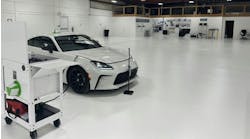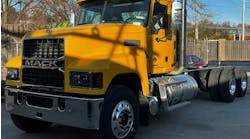|
General Motors is expanding its use of "smart" materials like shape-memory alloys and polymers, and hopes to integrate the technology into its vehicles within the next three years. The materials, which can change their shape and strength when exposed to heat, stress, magnetism or electrical voltage, will first be used on movable vehicle features like movable air dams and louvers, as well as interior grab handles and latches. "Smart materials will change the look and feel of our cars and trucks," said Larry Burns, GM vice president of research, development and strategic planning. "With these new materials, functionality can be 'programmed in' to enable innovative designs, improved efficiency, and new and improved features that will make our vehicles more exciting to own and operate than the automobiles of the past." Actuators and sensors made from materials like NiTinol (a nickel-titanium alloy) and other shape-memory alloys and polymers have the potential to improve vehicle performance and fuel economy, and enable new comfort and convenience features. These actuators and sensors can provide benefits when they are used to replace conventional motorized or hydraulic devices by reducing vehicle mass, component size and complexity. In an interview with ABRN Nancy Johnson, lab group manager at the vehicle development research laboratory, General Motors Research and Development, said, "We're looking at a whole class of different materials. If we can replace motors with another material that will perform the same function, we get the benefit of something being very quiet with more design flexibility and improved packaging. We started looking at shape-memory alloys because they are now at the point where we can get them in wire form, with consistent quality at a reasonable price." NiTinol has primarily been used in healthcare applications. Stents used to keep veins and arteries open, for example, are made from the material. GM is collaborating with HRL Laboratories and the University of Michigan in developing potential applications. To date, GM has more than 175 U.S. patents issued or pending based on research and application development for smart materials. According to Johnson, shape-memory alloys and polymers could potentially improve vehicle performance and fuel economy by replacing conventional motorized or hydraulic devices. Other possible future applications include thermo-magnetic motors, electrical generators that use the mechanical energy resulting from shape transformation, and SMA springs for use in engine cooling, carburetor and engine lubrication controls. One alloy, nickel titanium, is also being considered for use in car frames. In one example, Johnson described a louver system that opens automatically based on temperature requirements. She also said the company is working on an active air dam that could be raised to avoid scraping a curb or driveway. In the latter case, shape memory alloy wires would be heated (via resistive heating) to raise or lower the air dam based on sensor inputs. "We have an active grab handle that could be concealed, but automatically come down and present itself, and then fold back out of the way," Johnson says. "Instead of having a motor do that, we have a wire that is pulling on it." The advantage of shape-memory alloys over other technologies in these applications is that the shape-memory springs are quieter, more durable and cheaper than a motor. Many press reports have focused on possible future applications for shape-memory alloys, including body panels and mechanical parts that can return to their original shape after a crash simply by applying heat, something GM is investigating. "These new smart materials follow a long list of material applications we are already using," said Alan Taub, GM executive director of research and development. "A few examples include novel aluminum forming processes that provide enhanced body panels and lightweighting, polymer nanocomposites that provide superior mechanical properties at lower cost, and magnetorheological fluids for improved chassis systems. "The properties inherent in shape-memory alloys and polymers have the potential to be game-changers in the automotive advanced materials field, eventually leading to vehicle subsystems that can self-heal in the event of damage, or that can be designed to change color or appearance." While GM hopes to use the technology on body panels and other parts at some point, it could be years or decades before that's possible. "In sheet form, the material is very expensive right now," Johnson says. "We are looking at what we can do from the whole healability perspective, but it's not something that is our focus right now." "The idea of using shape memory materials for sheet metal parts is considered fairly far fetched right now," says James Proft, president of the International Organization on Shape Memory and Superelastic Technologies (SMST). "It's way too expensive."
|



